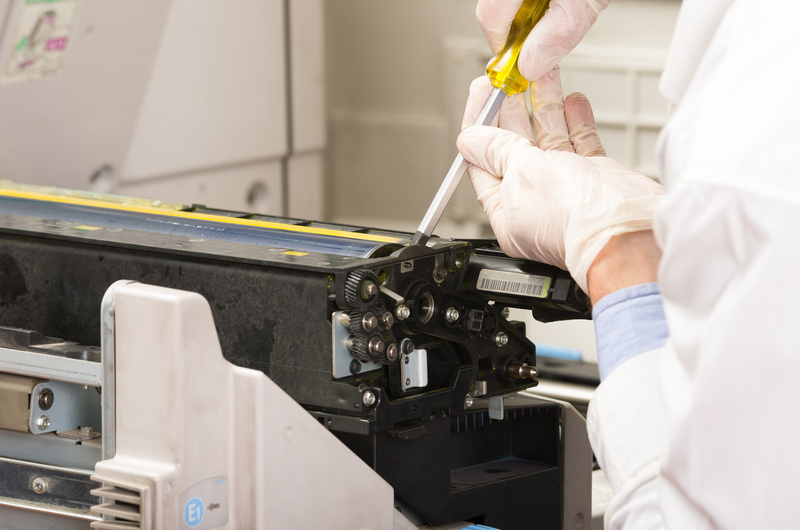Best Practices for Responsible PPE Waste Management in Daily Life
Personal Protective Equipment (PPE) such as masks, gloves, and face shields have become indispensable parts of our daily routines, especially in the wake of global health challenges. While these materials safeguard personal health, their widespread use has created a surge in PPE waste that threatens the environment. Practicing responsible PPE waste management is crucial for minimizing pollution and promoting community well-being.
This comprehensive guide explores the best practices for managing PPE waste responsibly in everyday life, addresses common challenges, and provides actionable, eco-friendly strategies that everyone can adopt. Whether you're an individual, a family member, or a business owner, these tips are designed to help you make informed and sustainable decisions.
Understanding PPE Waste & Why Responsible Disposal Matters
PPE waste refers to the discarded items like disposable masks, gloves, gowns, goggles, and even sanitizing wipes, used to protect individuals from pathogens and contaminants. With billions of people using PPE daily, the amount of waste generated is staggering--and a significant portion ends up in landfills, water bodies, and public spaces.
- Environmental Risks: Improperly managed PPE waste contributes to land and marine pollution, threatening wildlife and contaminating ecosystems.
- Health Hazards: Discarded PPE can harbor viruses, bacteria, and chemicals, posing risks to sanitation workers and the general public.
- Waste Management Challenge: The sudden increase in PPE waste has overwhelmed traditional waste management systems, making responsible practices all the more essential.
Key Statistics of PPE Waste Problem
- Over 129 billion face masks and 65 billion gloves are estimated to be used globally each month (2020 data).
- 70% of PPE waste is made from non-biodegradable plastics that can persist for hundreds of years.
- PPE litter has been detected on beaches, urban parks, and even remote areas, indicating the vast reach of the problem.

Daily Life Scenarios: Where PPE Waste Accumulates
PPE waste can generate almost anywhere, from households and workplaces to public areas and transportation. Understanding common sources helps plan better disposal strategies.
- Homes: Used masks, gloves, and wipes from regular outings.
- Offices & Workplaces: PPE used throughout work hours, replaced frequently.
- Schools & Universities: Student and staff protection items used en masse.
- Public Transport & Outdoor Spaces: Littered masks and gloves pose urban hygiene issues.
Best Practices for Responsible PPE Waste Management
Effectively managing PPE waste requires a blend of scientific practices, community awareness, and personal responsibility. Below are comprehensive PPE waste management tips for daily life.
Separate PPE Waste from Recyclables
- Do Not Recycle Used PPE: Used masks, gloves, and wipes should never be placed with regular recyclable materials due to contamination risk.
- Designate a dedicated, lined PPE waste bin at home, school, or office to avoid cross-contamination.
Proper Containment and Sealing
- Use Double-Bagging: Place PPE waste in a plastic bag and then layer it inside another to prevent leakage or accidental exposure.
- Securely Tie Bag: Always tie bags tightly to ensure nothing escapes and reduces handling risks for sanitation workers.
Label PPE Waste Clearly
- Label Bins or Bags: Clearly mark bags or bins meant for PPE with a "PPE Waste" label to alert waste handlers and family members.
Don't Litter: Always Find a Bin
- Never dispose of masks, gloves, or wipes on the ground, on public benches, or in toilets.
- Encourage children and others in your care to do the same, setting a positive example in your community.
Minimize PPE Use Where Safe
- Choose Reusable PPE: Where possible, opt for washable cloth masks and reusable gloves, reducing single-use waste generation.
- Follow local health guidance to balance protection and sustainability.
Follow Local Waste Management Guidelines
- Stay informed about your municipal waste regulations, as many cities have specific instructions for PPE disposal.
- When in doubt, check your local authority's website for the most current protocols on PPE waste.
Educate Family and Staff
- Share responsible PPE waste management practices with family members, colleagues, and caregivers.
- Post visual guides or reminders near disposal areas, especially in schools and workplaces.
Protect Sanitation Workers
- Proper containment, labeling, and separating PPE waste makes their job safer and respects their crucial role in community health.
- Encourage appreciation for waste collectors and sanitation workers.
Eco-Friendly Alternatives to PPE Waste
Moving beyond efficient disposal, sustainable PPE solutions can further minimize environmental impact:
- Opt for Compostable PPE: Some manufacturers now offer biodegradable latex gloves and compostable masks made from plant fibers.
- Wash and Reuse: Invest in high-quality, washable masks and consider reusable face shields.
- Donate Surplus PPE: If you have excess unused PPE, donate it to hospitals, NGOs, or other frontline organizations rather than allowing it to expire and end up as waste.
Dangers of Improper PPE Waste Disposal
Disposing of PPE irresponsibly can have serious consequences:
- Spread of Infection: Used masks and gloves left in public can be sources of disease transmission.
- Harm to Wildlife: Animals may ingest, choke on, or become entangled in discarded PPE.
- Plastic Pollution: Non-biodegradable PPE breaks into microplastics, polluting water and food chains.
- Sanitation Worker Health Risks: Handling contaminated PPE exposes workers to infectious agents.
PPE Waste Recycling Initiatives and Innovations
While most PPE is currently not recyclable in standard curbside programs, several initiatives are working to change this for a more sustainable future:
- Pioneering Recycling Programs: Specialized companies are developing methods to recycle PPE, turning masks and gloves into park benches, fuel, or new materials.
- Community PPE Collection Drives: Some areas organize safe collection points for large-scale PPE waste, leveraging economies of scale for processing.
- Research in Biodegradable PPE: Ongoing innovations may lead to entirely compostable or easily-recyclable protective gear.
How to Reduce Your Household or Workplace PPE Waste Footprint
- Assess Real PPE Needs: Avoid stockpiling or overusing disposable items.
- Choose Multi-Use and Washable PPE When Possible: This significantly cuts down on waste.
- Encourage Proper Disposal Among Peers: Lead by example and gently remind others to be responsible.
- Educate Children and Elderly: Age-specific guidance can make a big difference.
What Not To Do With Used PPE
- Do not flush PPE items down toilets or sinks.
- Never burn PPE waste at home, as it releases toxic chemicals.
- Don't attempt to reuse single-use PPE, as it loses effectiveness and increases infection risks.
- Avoid discarding PPE with standard recyclables or garden compost.
Building a Community of Responsible PPE Waste Management
Responsible PPE disposal is not a solitary responsibility--it's a collective one. You can foster a healthier environment by:
- Raising awareness in your neighborhood, school, or social group about PPE waste management best practices.
- Organizing community PPE collection events or collaborating with local waste management authorities.
- Supplying proper bins and visual instructions in public and private spaces.

FAQs About PPE Waste Management in Daily Life
- Can I recycle disposable masks or gloves?
No, these items usually cannot be recycled through curbside recycling. Follow local guidelines and dispose of them in household waste with proper containment. - Are reusable masks better for the environment?
Yes, cloth masks reduce single-use waste. Be sure to wash and care for them according to health advisory instructions. - What should I do with PPE waste if I am sick?
Double-bag and securely tie all used PPE, then place it with your secured household trash. Take extra care to prevent anyone else from handling the waste directly. - How can businesses encourage responsible PPE waste disposal?
Provide labeled bins, give regular training on safe disposal, and monitor communal spaces for compliance and hygiene.
Conclusion: Make PPE Waste Management Part of Your Responsible Routine
The surge in PPE use has protected billions but also exacerbated environmental and public health challenges. By implementing these best practices for responsible PPE waste management in daily life, we can make a substantial positive difference. Remember to separate PPE from recyclables, double-bag waste, choose reusables when safe, and educate those around you.
Ultimately, managing PPE waste responsibly is an ongoing commitment and a shared duty. With informed choices, a pro-active attitude, and collective effort, we can ensure that personal safety does not come at the planet's expense.
Adopt these practices today, and champion the cause of a cleaner, safer, and more sustainable world for everyone.
- Stay informed.
- Dispose responsibly.
- Encourage others.
- Be part of the solution--manage PPE waste responsibly!
